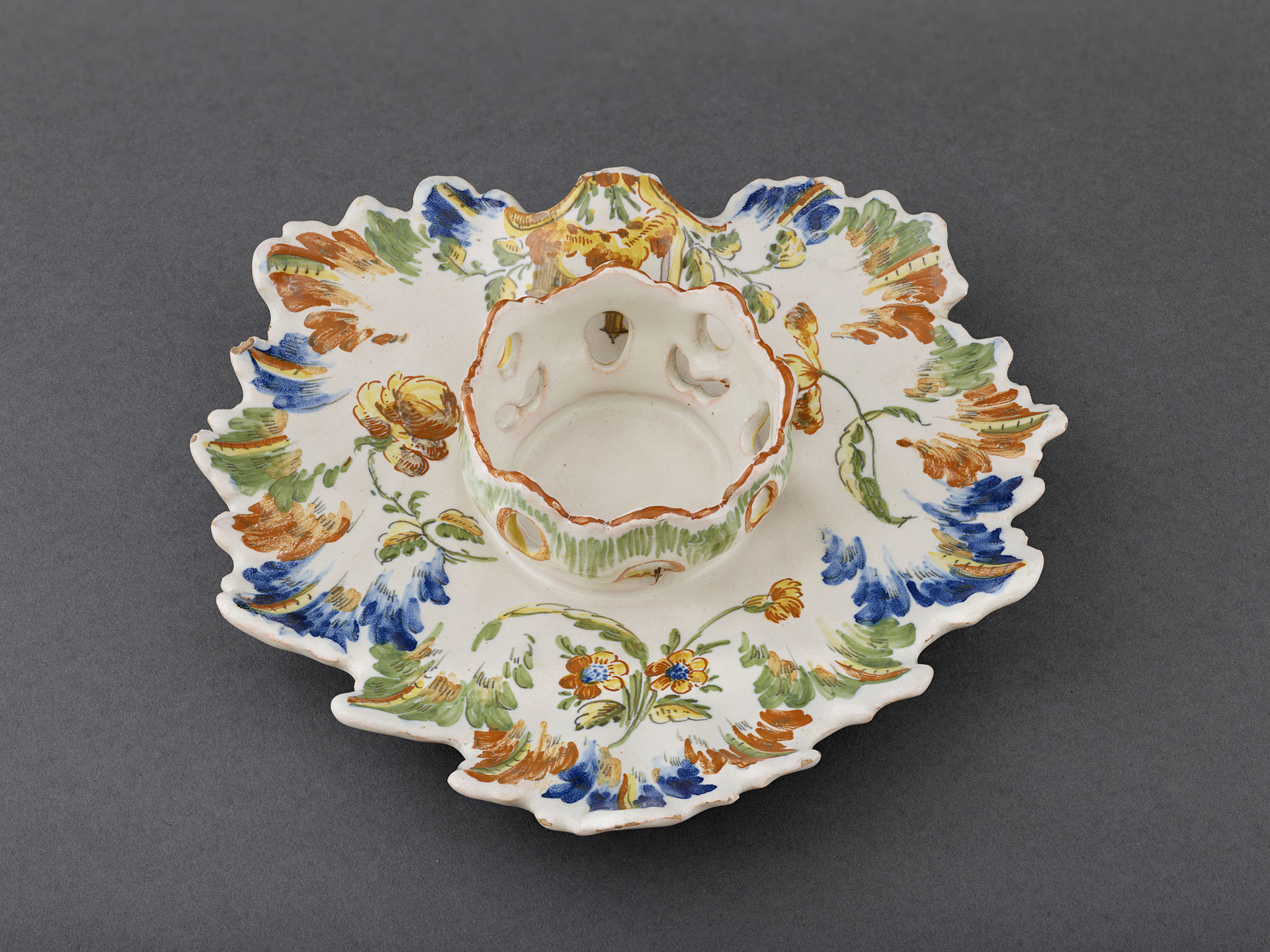
Manufactura de Alcora
Mancerina [saucer for chocolate cup]
Fine “andromic” series (1764-1775)
WORK INFORMATION
Ceramic, polychrome earthenware, 19 x 20 cm
The Alcora manufactory was founded in 1727 by the 9th Count of Aranda on land he owned in what is now the province of Castellón. The aim was to create a luxury earthenware and porcelain factory that would compete with foreign manufactories. Royal privileges, including tax exemption on the export of pieces and the free entry of materials from abroad, allowed this manufactory to operate until the middle of the 19th century despite the fact that it barely made any profits.
Throughout its existence, the factory became a model of organisation and a point of reference in terms of aesthetics thanks to the recruitment of foreign specialists, artists and “secretists” who claimed to know the secret of porcelain manufacture. In addition, the creation of an apprentice academy enabled the manufactory to continue to provide top quality production.
This mancerina belongs to the establishment’s second period (1749-1786), which began when Pedro Pablo, son of the 9th Count of Aranda, inherited the factory. The 10th Count was the Spanish ambassador in Paris and was in contact with the Encyclopaedists. His curiosity led him to search for the formula for porcelain, but he only managed to obtain a material that was similar to French soft paste and English pipe clay.
The complexities of the factory became a source of unrest, leading to resignations and the creation of other workshops that tried, without much success, to imitate Alcora ceramics. For this reason, the Alcora factory requested an order from the King allowing it to identify its products with an “A”. In 1789, the “fabriquetas” [“pottery shacks”] – as they were derisively called – were closed down by royal decree.
Stylistically, this mancerina in the shape of a vine leaf is decorated with small flowers and other stylised plant motifs characteristic of the fine “andromic” series described in the memorial written in 1775 by the manager of the Alcora factory, Mamés Lalana. The latter became manager in 1766 and in his memorandum he described all the models introduced in the factory since 1764.
A mancerina is a saucer with a frame to hold the jícara (handle-less cup) containing the melted chocolate. It was invented in the second half of the 17th century by the Marquis of Mancera, Viceroy of Peru. The first examples were made of viceroy silver, but during the 18th century they were also made of earthenware or porcelain.

